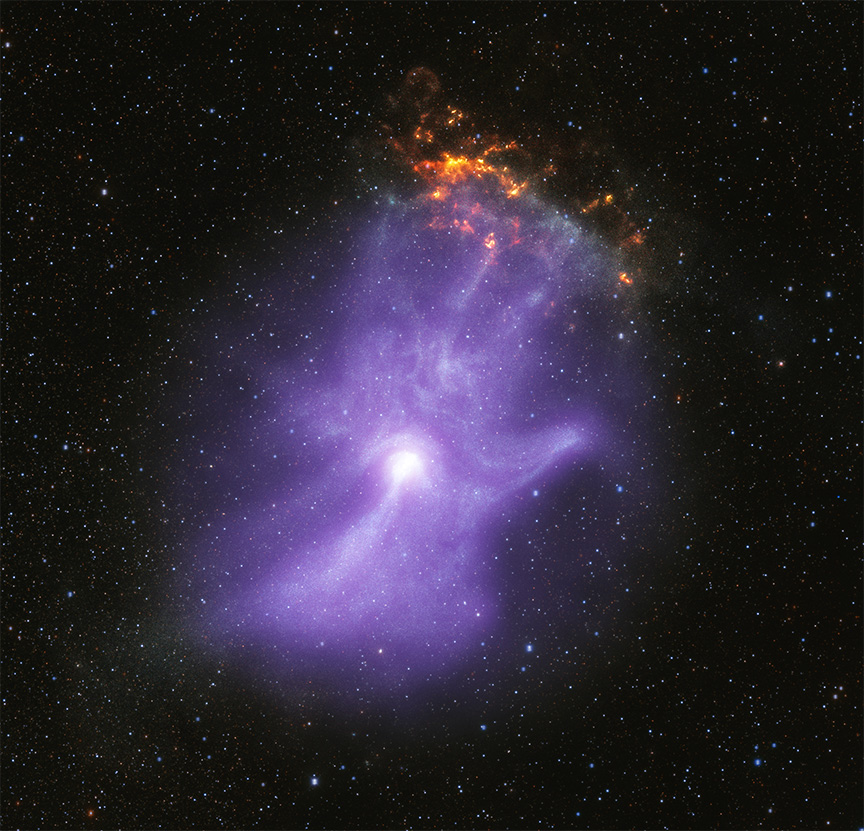
View of MSH 15-52
In 2001, NASA’s Chandra X-ray Observatory first observed the pulsar PSR B1509-58 and revealed that its pulsar wind nebula (referred to as MSH 15-52) resembles a human hand. Now Chandra’s data of MSH 15-52 have been combined with data from NASA’s newest X-ray telescope, the Imaging X-ray Polarimetry Explorer (IXPE) to unveil the magnetic field “bones” of this remarkable structure.
Image Credit: Credit: X-ray: NASA/CXC/Stanford Univ./R. Romani et al. (Chandra); NASA/MSFC (IXPE); Infared: NASA/JPL-Caltech/DECaPS; Image Processing: NASA/CXC/SAO/J. Schmidt)
- X
https://www.nasa.gov/image-detail/msh1552/
Image CreditCredit: X-ray: NASA/CXC/Stanford Univ./R. Romani et al. (Chandra); NASA/MSFC (IXPE); Infared: NASA/JPL-Caltech/DECaPS; Image Processing: NASA/CXC/SAO/J. Schmidt)
Size864x831px



























